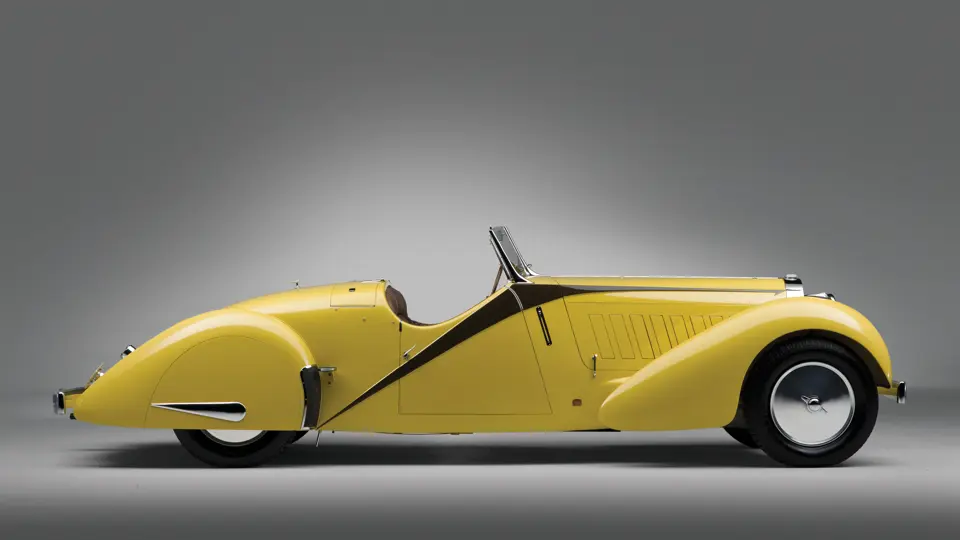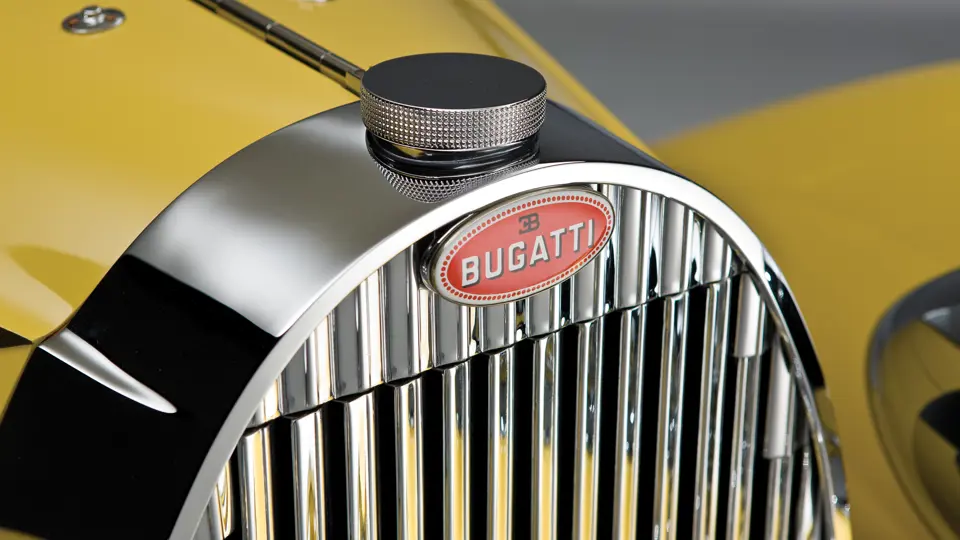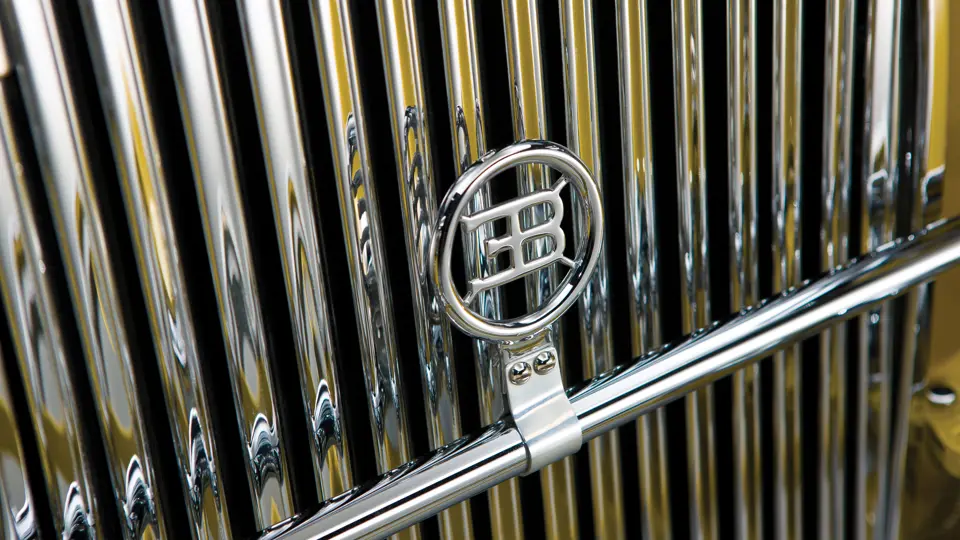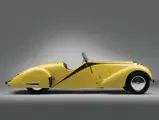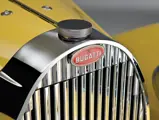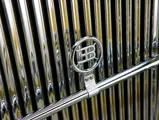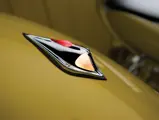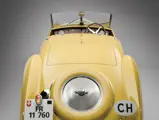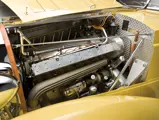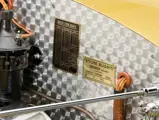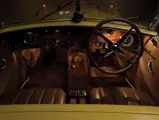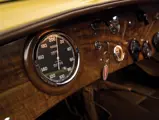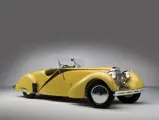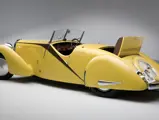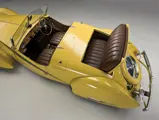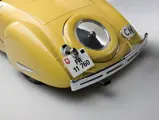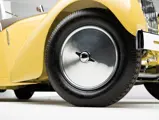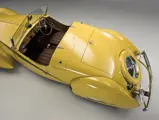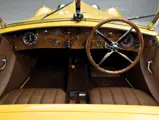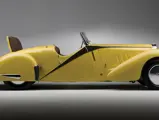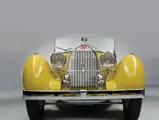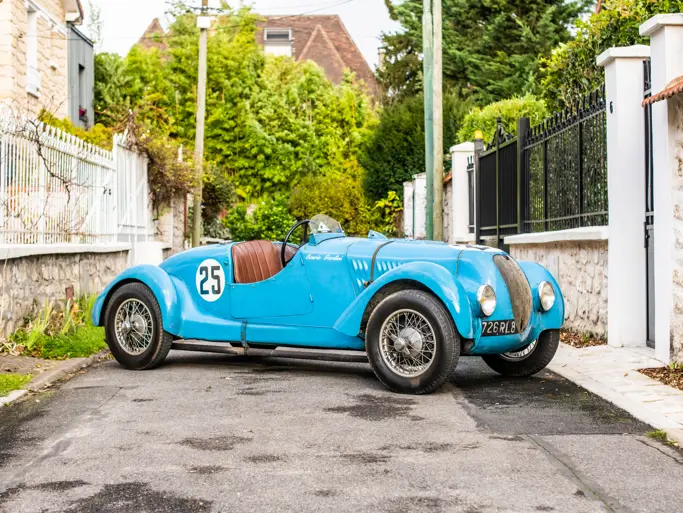135 hp, 3,257 cc DOHC straight eight, Zenith carburetor, four-speed manual transmission, front semi-elliptic springs, rear quarter-elliptic inverted springs, live axle, four-wheel mechanical brakes. Wheelbase: 130"
- One of only two Bugatti Type 57 roadsters bodied by Worblaufen in Switzerland
- A unique design with extensive Swiss history
- Discovered in France in 2000 and fully restored to exacting specifications
- Fully documented, 18-month rebuild capped by 2005 Pebble Beach award
- Extensive research conducted by owner in conjunction with Paul Ramseier, grandson of Fritz Ramseier and founder of Swiss Car Register
M. Jules Aellen and his coachbuilt Bugatti
Jules Aellen must have known he’d bought the right car the minute he won the Grand Prix d’Honneur at the 2nd Swiss Automobile Concours d’Elegance in Montreux on June 8, 1935.
The flamboyant owner of Au Faisan Dore (Golden Pheasant), a specialist food store in Fribourg, Switzerland, Aellen had taken delivery of his exquisite new Bugatti Type 57 roadster only days before the show and beat 40 competitors to the prize.
Aellen was accompanied by his wife as reported by the Fribourg newspaper La Liberte, who gushed that she was “delightfully dressed and wearing a hat designed by Miss Ella Schmidt of the Salon de Haute Monde du Capitole.” He went on to note, “she was particularly applauded when she presented to the experts and the public the remarkable beige Bugatti, which had been bodied by the Swiss specialists, the Ramseier brothers of Worblaufen, Berne.”
The Aellens were so proud of their win that they saved all their newspaper clippings. The photographs also appeared in the June/July 1935 ACS-magazine and in a book, Bugatti – Automobiles and Autorails.
Aellen’s car was one of only 10 Roadster Grand Raid two-seater Bugattis to be built, as the company sought a more sporting image for its new Type 57. The prototype roadster was s/n 57221, which was displayed on the Bugatti stand at the 1934 Paris Motor Show, according to Bugatti expert David Sewell and founding member of the Swiss Car Register, Paul Ramseier. This original car was lower than the standard model, with raked steering column and gear lever and the handbrake repositioned. It had a higher rear axle ratio and a two-part dashboard with speedometer and tachometer at each end.
The bodywork was striking – streamlined with a cut-down v-windshield and twin headrests streaming down to the tail. The bodywork was aluminum, finished in black with a yellow hood and colored flash leading down to the enclosed rear fenders. S/n 57221 can be seen in Everett Louwman’s National Museum in Holland. After nine more Grand Raid roadsters, Bugatti created the Aerolithe and Type 57S for sporting owners.
Aellen’s car was one of two Grand Raids bodied by the Ramseier brothers of Worblaufen. Numbered 57260, it was built in November 1934 and invoiced on April 2, 1935 to the Zurich agent BUCAR for 46,110.25 French francs. The chassis had been ordered on March 22 for Bugatti’s Geneva agency, whose customer Jules Aellen commissioned coachwork on March 27 from Carosserie Worblaufen.
Aellen ordered a two-seater roadster, like the one built for Monsieur Montfort, which was the pseudonym of Prince Louis Napoleon, a descendant of Napoleon Bonaparte and a Bugatti racing driver. Montfort lived in Lausanne on the shore of Lake Geneva, and his car was s/n 57246, the previous Grand Raid sold. It had also been bodied by Worblaufen, for the Geneva Motor Show in March 1935, but without the headrests and with a flat one-piece folding windshield, permitting a convertible top and side-screens to be fitted.
Aellen wanted a taller v-screen than s/n 57221, and with the folding top he ordered a tonneau and a full car cover. He also requested the headlights be raised and the letters “EB” in the center of the headlight bar. Finished in beige with black side flashes, Aellen’s rumble seat roadster was accompanied by two sets of matching leather coveralls, two Pecari jackets in the same color as the car, two leather caps, two sets of driving glasses and a leather picnic basket. S/n 57260 cost Aellen 4,000 Swiss francs but took 90 days longer to finish than he had hoped. It was finally registered FR 11760, just in time for the Montreux Concours, where it was deemed the best car in the show, taking home the “Grand Prix” (grand prize).
The Type 57
Built between 1934 and 1939, the Type 57 was Bugatti’s swan song. It was developed by Jean Bugatti, and it simplified the Miller DOHC drive train that had been appropriated for the Types 50, 51 and 55, substituting a chain of gears at the rear of the engine to drive the camshafts.
The car would, generally speaking, be bought in two series with four variations: T57, T57C (with compressor), T57S (short, low-slung chassis) and T57SC (same thing with blower). There were four “standard” body styles available for each chassis, in theory at least. They were Galibier (four-door sedan), Ventoux (two-door, four-seat coupe), Stelvio (two-door, four-seat cabriolet), Atalante (two-door, two-seat coupe) and Aravis (two-door, two-seat cabriolet).
This, however, does not account for the various special T57s, including the numerous coachbuilders across Europe who created one-offs. It also does not account for the Grand Raid roadster, which was essentially a prototype that preceded the famous 57S.
The offering of such a car is not only incredibly rare but tremendously important. In fact, this car is documented in Bugatti 57 Sport by Pierre-Yves Laugier and in the book The Bugatti Type 57S by Bernhard Simon & Julius Kruta. Both of these rare books will walk an interested party through the development of the Type 57, particularly the prototype examples.
Ramseier’s Coachworks
Fritz Ramseier began as a master cartwright in Worblaufen, a suburb of Berne in 1900. His sons Hans, Ernst and Fritz Jr. formed Carrosserie Worblaufen in 1929. The 1930s were the high mark of the company’s individuality, with striking designs for Alfa Romeo, Bugatti, Delage, Hotchkiss, Lancia, Mercedes-Benz, Packard, Peugeot, Studebaker, Talbot-Lago and one of the last enormous Swiss Martinis.
At least 43 Worblaufen customs are known to exist, mostly in Switzerland. These include eight Alfa Romeos; two Bentleys, Bugattis, BMWs, Citroens, Hotchkiss and Rolls-Royces; four Delahayes and Talbot-Lagos; three Peugeots and Lancias; and one each of Cadillac, Ford, Graham, Isotta Fraschini, Mercedes-Benz, Packard, Jaguar and Renault. The other Bugatti was to play a key part in the survival of this car, and the company’s astonishingly complete records completed a potentially insoluble puzzle.
Subsequent History of 57260
The Aellens kept their roadster until 1949, when they sold it to Chassures Henri, a shoe company in Geneva. By 1954 it belonged to a bookseller named Ernest Maring and was spotted in Geneva by Bugatti historian Norbert Steinheauser, carrying plate GE 11642.
S/n 57260 was exported to France in 1960 and in 1970 was acquired by reclusive collector Jean Serre in Belfort, France. The car remained there for 30 years until 2000, when a longstanding American collector and dealer acquired the car from Serre. At the time of its discovery, the car required extensive restoration as it had been involved in an accident in previous years that damaged the entire front end.
He contracted with Rod Jolley, and the car was shipped directly to Rod Jolley Coachbuilding in the UK. The original sheet metal was removed, and every piece that was original, along with the original wood, was saved. Jolley then flew to Italy to meet with Paul Ramseier, grandson of Fritz Ramseier and co-founder of the Swiss Car Register as well as the Concorso d’Eleganza Villa d’Este, who was instrumental in locating the black and red sister car. It still belonged to the Montfort family in Italy, who had bought it new.
Jolley was sent to Italy to photograph this sister car, take measurements and then make the necessary pieces, namely the front fenders and hood. All other sheet metal on the car is original. The decision was made not to replace the chassis but rather remake and graft in the missing front rails, thus leaving the rest of the chassis original to the car.
Noted restorer Alan Taylor of Escondido, California was subsequently engaged to carry out the remaining restoration work. Taylor and the owner were sure they could complete s/n 57260. The owner already owned 1934 sedan s/n 57111 that had been stored with the engine apart since the late 1940s. “It was very complete, it was low-mileage and had just been sitting – one of the best examples of a Type 57 chassis, I’ve ever seen,” said Taylor. “We took pictures and used it as a bible.” As 57260’s engine was missing at the time of discovery, 57111’s radiator, front axle, complete engine and gearbox were used. The rebuilt engine from the donor sedan is reported to be tremendously powerful and delightfully high-revving, particularly for a Type 57 motor. In Taylor’s words, “it’s an exciting car to drive.” Again, Mr. Ramseier was instrumental. “He had everything. They did a phenomenal job supplying documentation to us. We had wonderful pictures and fantastic documents about the car, inside and out,” said Taylor.
The roadster took about 18 months to restore and tremendous financial investment. The car was restored back to its original color, as a match was taken from original paint found on the car. The only difference was the choice to change the color of the stripping and matching leather from what was described as “lipstick red” to moss green as seen today. Also worth noting is the fact that this is one of very few Bugattis that was delivered with a matching chassis color. It is presented in this manner today, as documented in the restoration photos.
Following completion, the Bugatti was accepted at Pebble Beach in 2005, where it took 2nd in class – an excellent achievement, particularly in the year where Bugatti was a featured marque at Pebble Beach.
S/n 57260 fulfills two vital elements of a top-echelon collector car. First, its extensive history is thoroughly documented (and particularly fascinating), and second, it remains magnetically exotic and would draw a crowd in Montreux today just as it did 76 years ago.
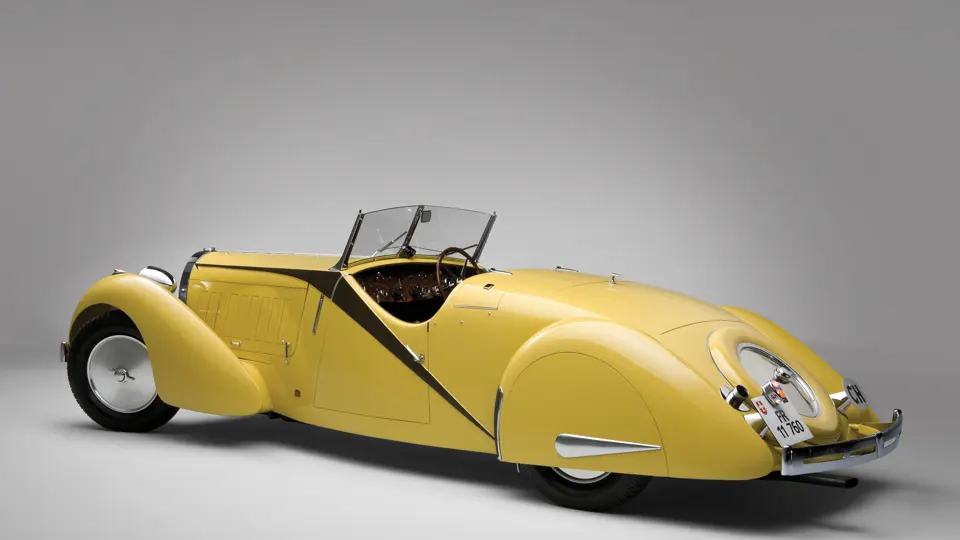



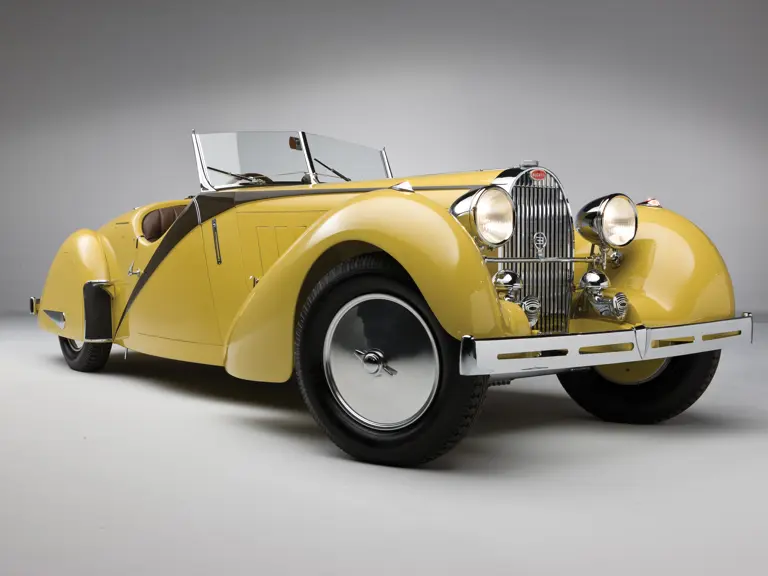
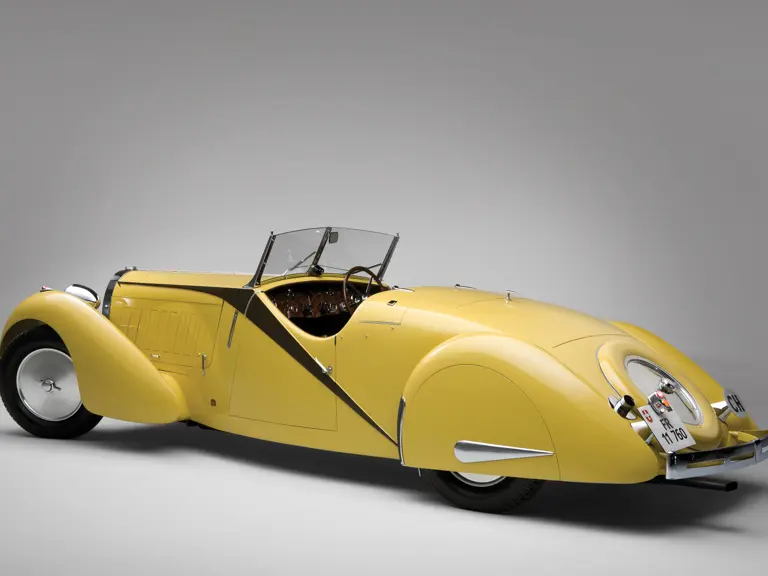
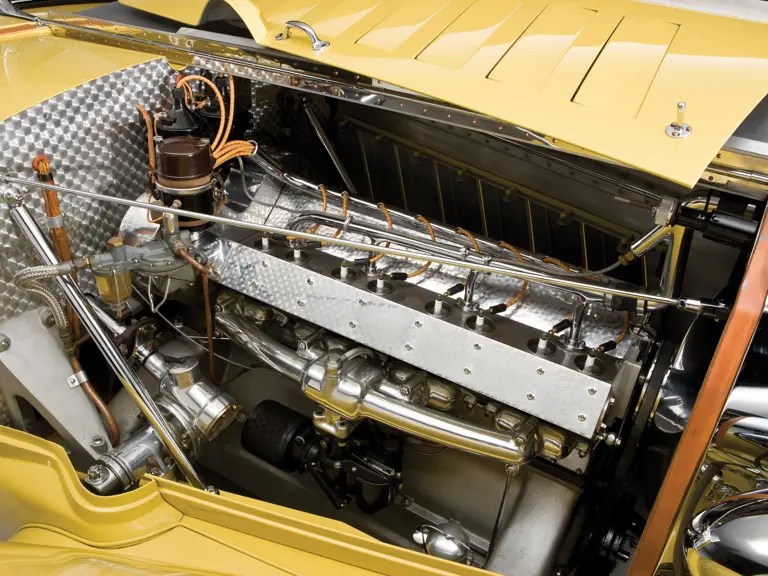

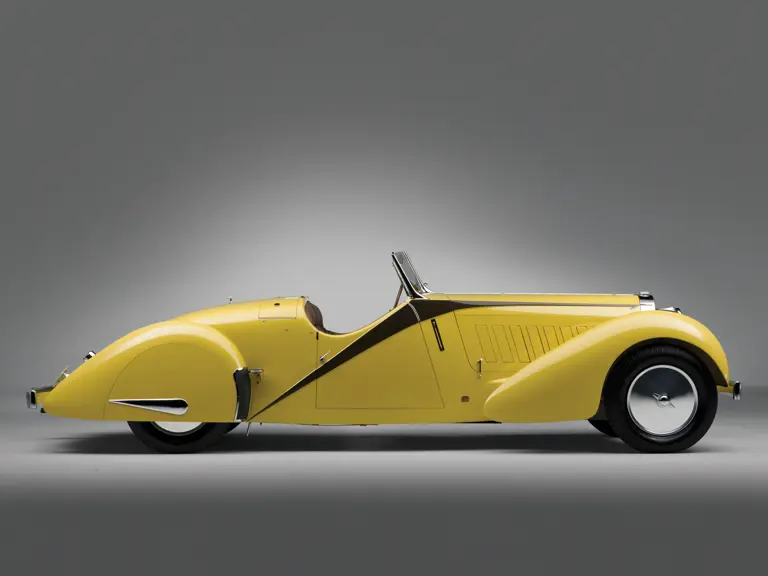

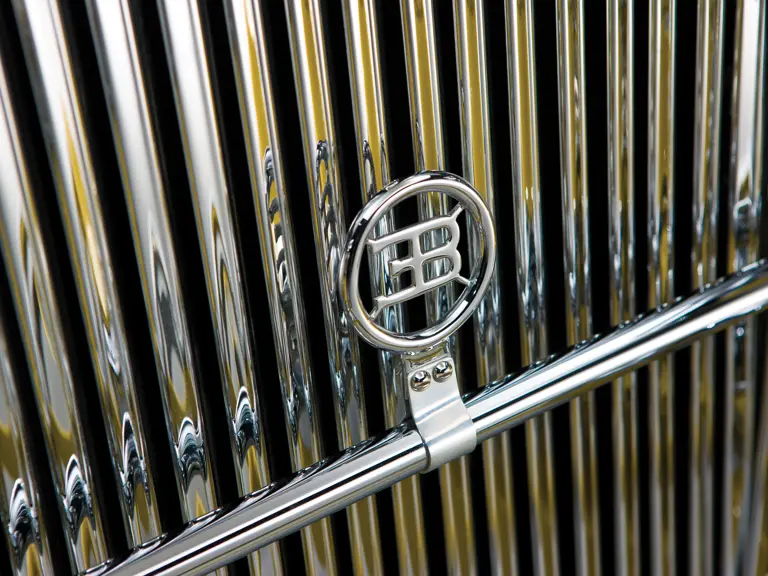

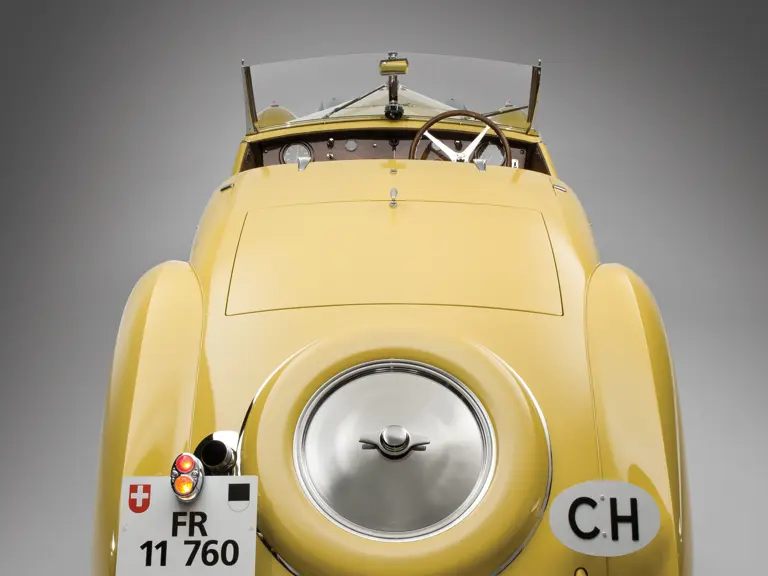
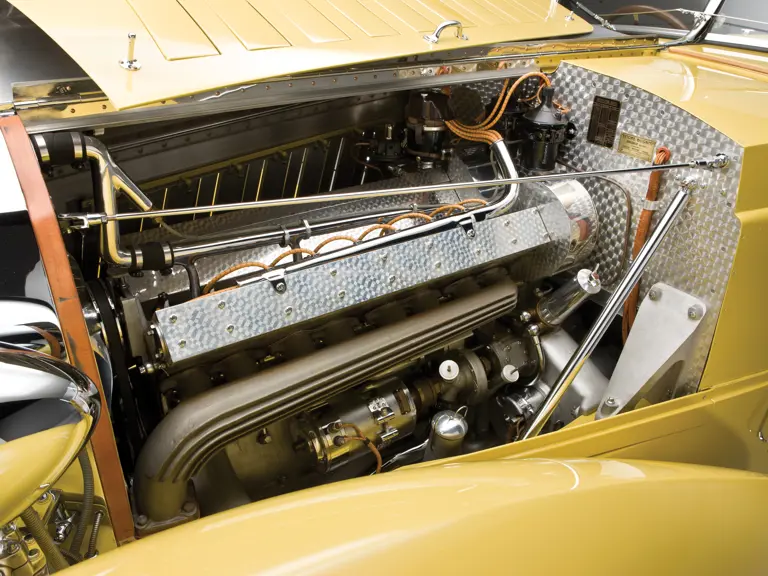
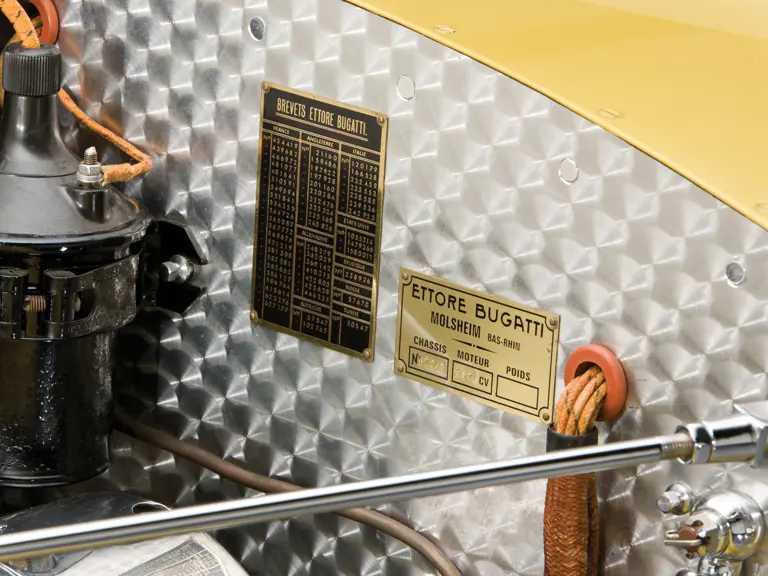

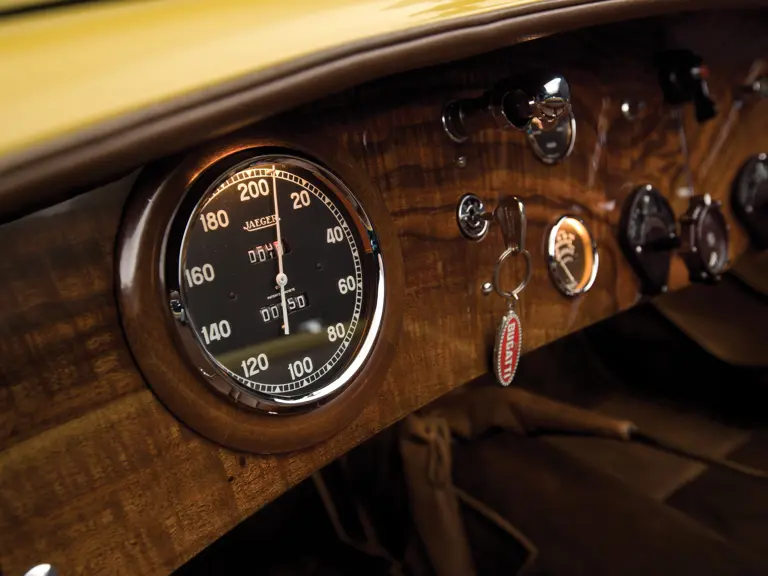
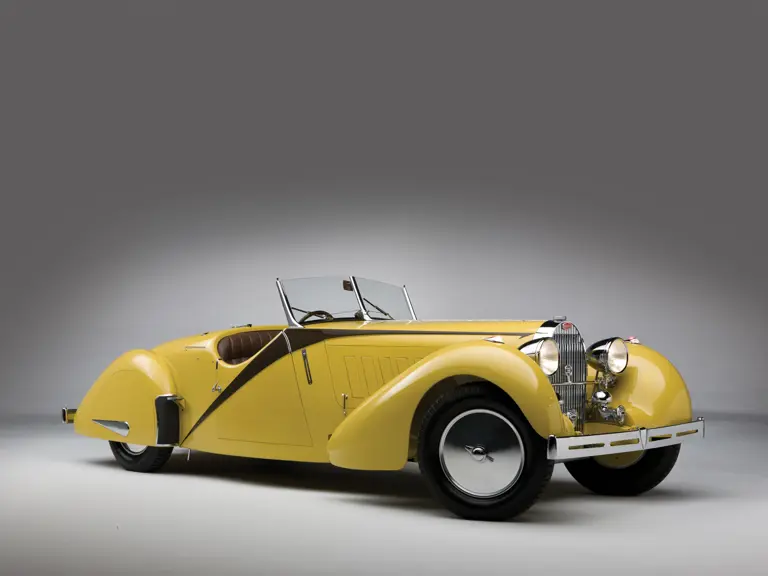
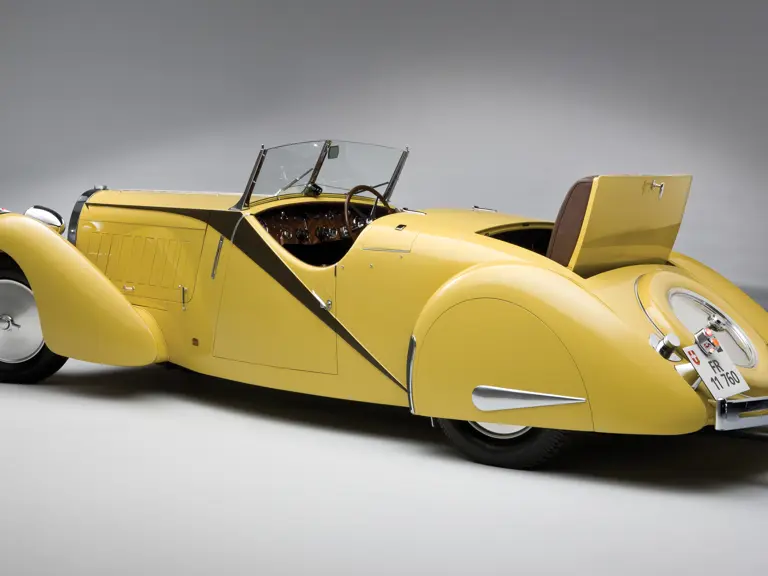

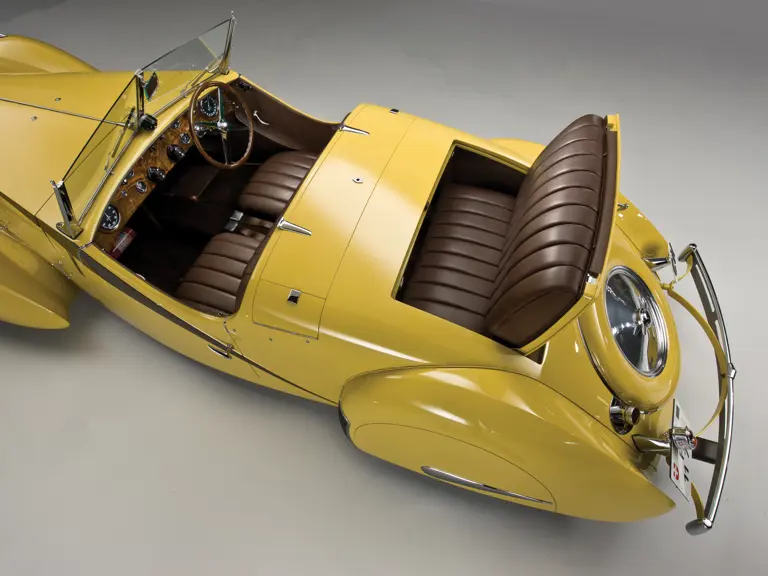
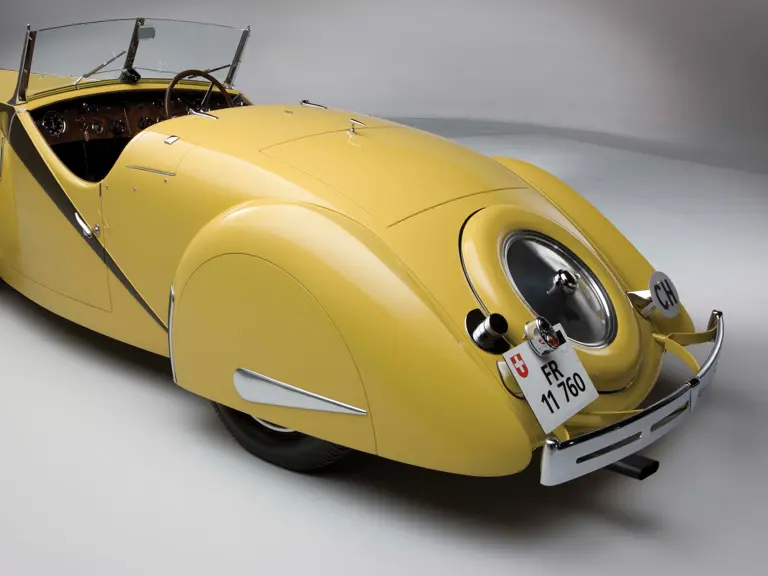
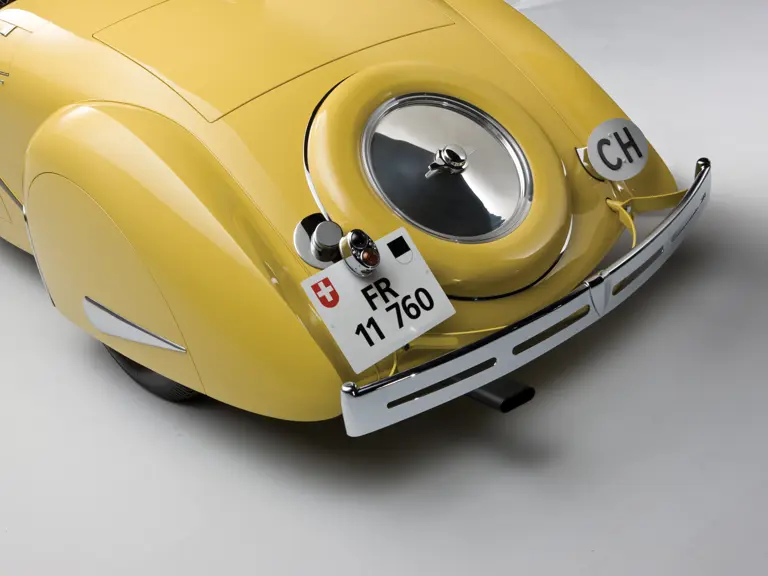
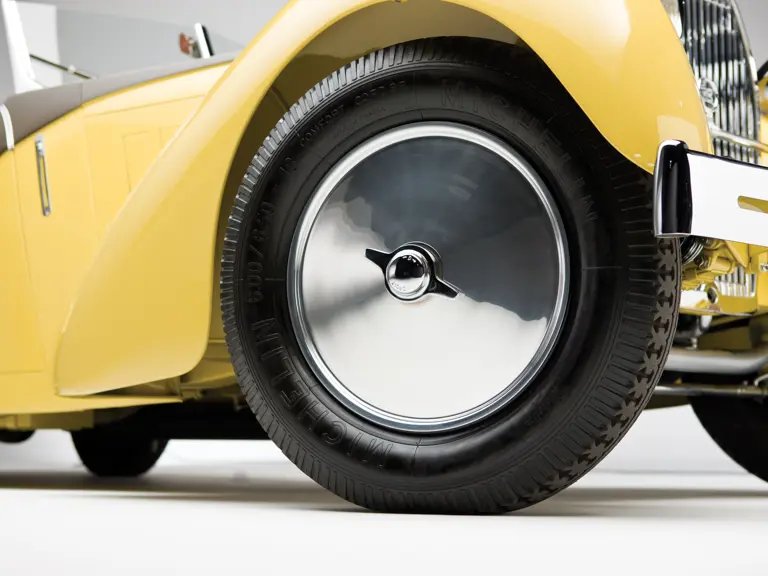
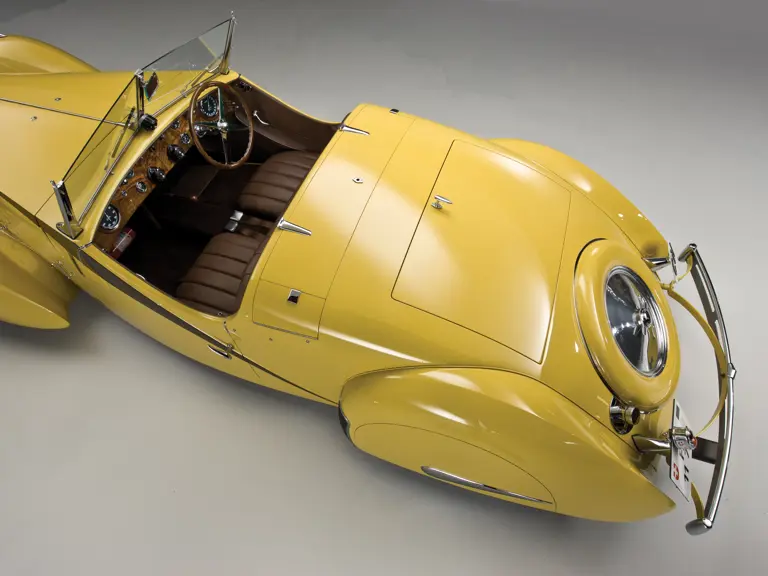
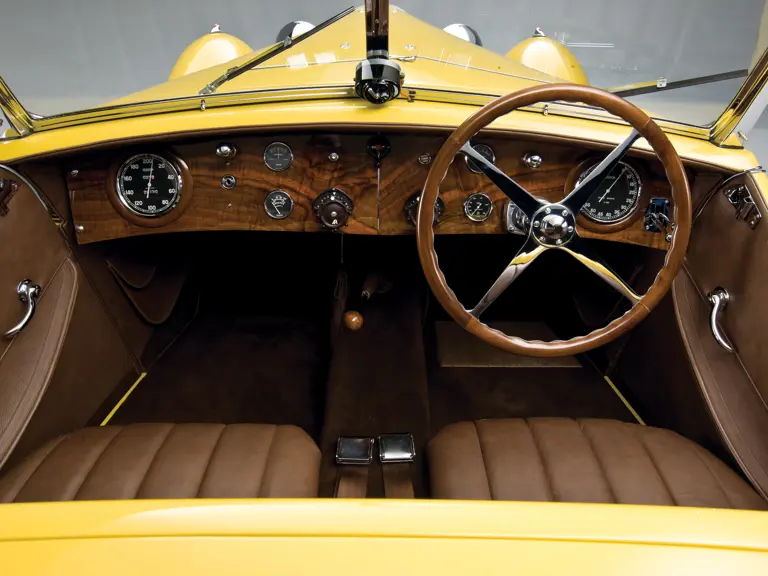
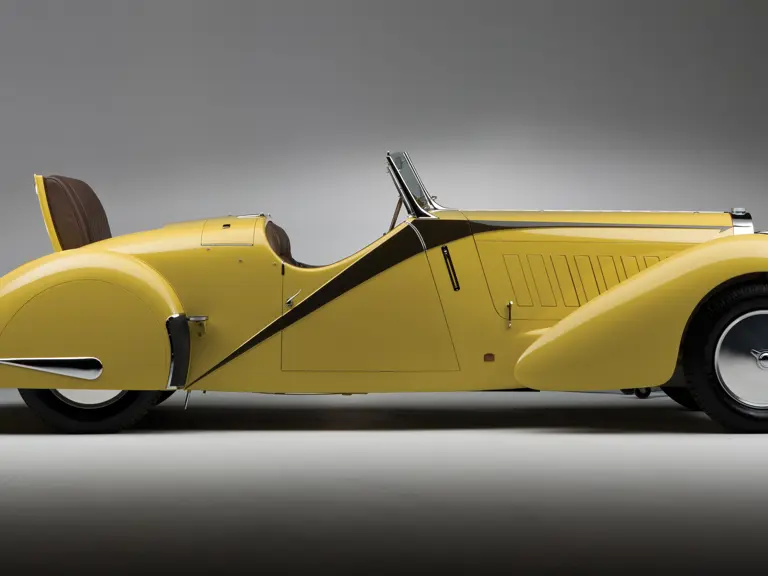

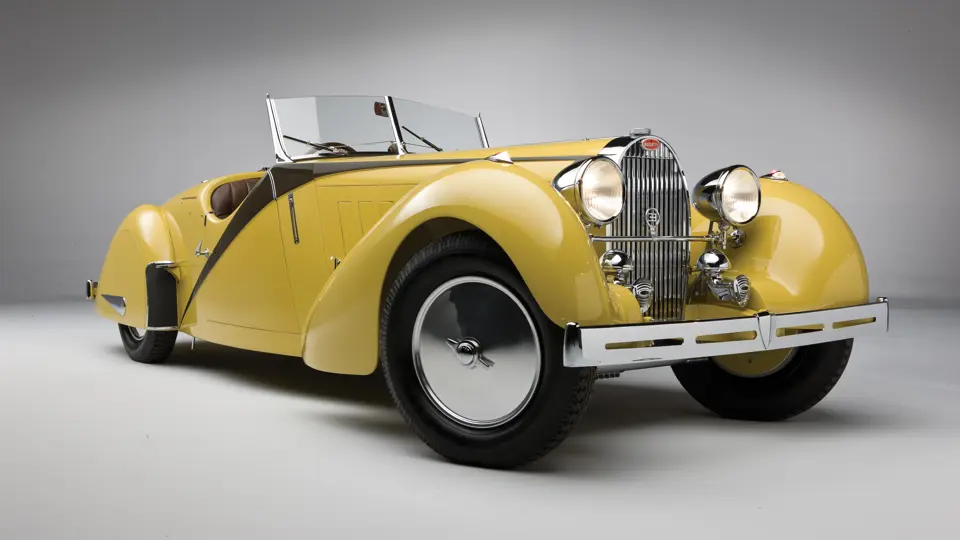
 | Monterey, California
| Monterey, California
